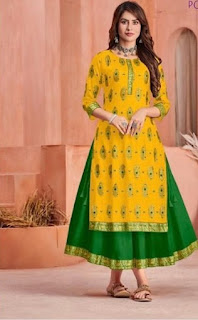Cotton Sarees - Summer Ethnic Wear For Women In India
Saree Is An Indian Woman's Traditional Attire
That Is Increasingly Popular Across The Globe As A Go-To Look, Work, And Outing
Wear. Cotton Saree Is One Of The Most Comfortable Fabrics In India, Especially
During The Summer. India is divided into various states, each of which has its
own traditional cotton saree. The Indian summers are extremely hot, hence women
choose to dress in cotton during this time.
There Are
Various Options Of Cotton Sarees Available For Each Occasion.
1. Khadi Saree
2. Chanderi Saree
3. Tant Saree
4. Kanjeevaram Saree
5. Kota Doria Saree
6. Dhakai Saree
Khadi Saree
Handlooms and hand-spun cotton yarns are used
to create Khadi sarees. These Cotton Sarees Are The Most Popular And Can Be
Found In Every Indian Woman's Wardrobe. These Are Popularly Known As Breathable
Material And Are Favored By Indian Women As A Daily Wear During The Summer.
Chanderi Saree
These are Chanderi, Madhya Pradesh,
traditional sarees. These Are Perfect For Both Corporate and Traditional
Parties. Because of their superior comforting quality and designs, these sarees
are very popular. This is made of fine silk with a smooth textured cotton
finish.
Tant Saree
These Bengali sarees are known for their
starch-infused crispness and come in a variety of colours and designs. It's
both comfortable and elegant, and it's a popular choice for Indian summer
weddings.
Kanjeevaram Saree
This item is named after a little town in Bangalore called Kanchipuram, and it is handcrafted with great care by local artisans. South Indian women are more likely to wear this. Although silk Kanjeevaram is more popular, cotton sarees are just as fashionable and comfortable.
Dhakai Saree
Dhakai sarees are a type of saree that
originated in Dhaka, Bangladesh. In the eastern states, particularly Bengal,
these are widely worn. Dhakai Sarees are available in plain or golden thread.
Sambalpuri Saree
These Sarees Originated From Beautiful Indian State, Orissa. Sambalpuri Sarees Are Known For Its Different Weaving Techniques. The Threads Are First Tie-Dyed And Later Woven Into Fabric Form Which Adds To The Richness Of The Saree.




Comments
Post a Comment